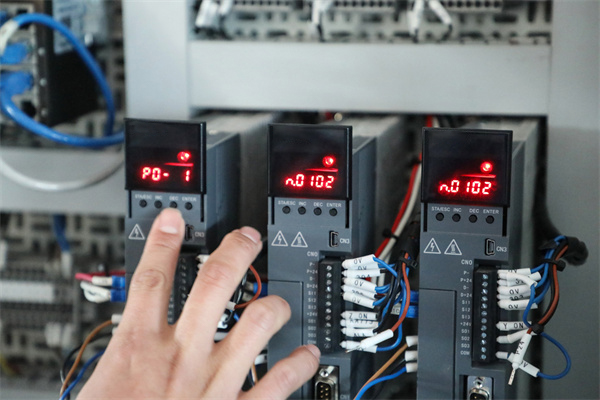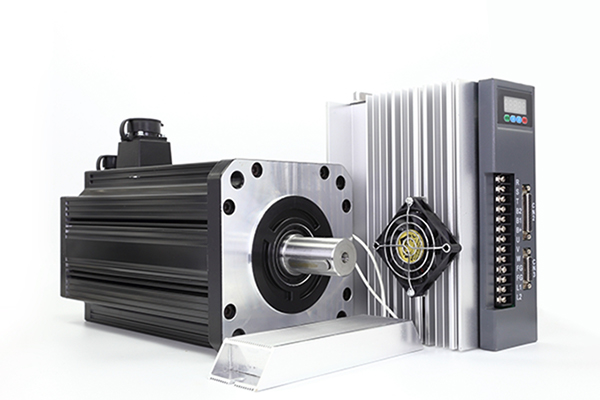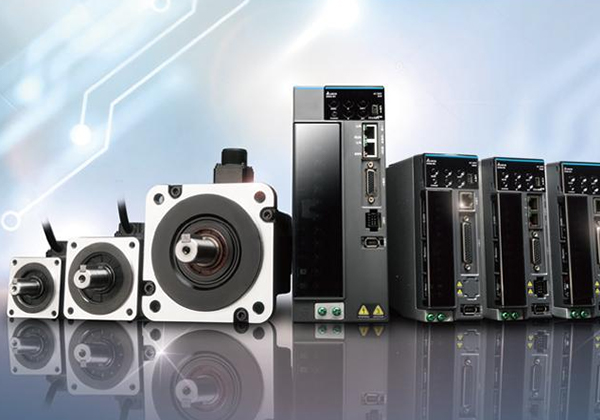Home » Servo System » What are the Types of Servo Control System?
What are the Types of Servo Control System?
A servo control system is an electronic control system that realizes precise position and speed control. Servo control systems can be categorized into several types based on different classification criteria. This article will introduce several common classifications of servo control systems.
1. Classification by Control Mode

Position control system. Position control systems control the movement of servo motors by measuring the position of an object and comparing it to a set value, so that the object accurately reaches the target position. This type of control system is commonly used in applications that require high-precision positioning, such as robots and printing machines.
Speed control system. A speed control system controls the speed of a servo motor by measuring the speed of an object and comparing it to a set value to keep the object at a steady speed. This type of control system is commonly used in applications that require stable motion speeds, such as conveyor belts and textile machines.
Force control system. A force control system adjusts the output force of a servomotor by measuring the force applied to an object and comparing it to a set value so that the object is subjected to an accurate force. This type of control system is commonly used in applications that require precise force control, such as robotic arms and presses.
2. Classification by Control Object

Motor Servo Control System. Motor servo control system is the most common type of servo control system, which realizes precise control of objects by controlling the speed, steering and position of the motor. Motor servo control systems are widely used in industrial automation fields, such as CNC machine tools, elevators, etc.
Hydraulic servo control system. Hydraulic servo control system realizes precise control of hydraulic cylinders, hydraulic motors and other hydraulic actuating elements by controlling the pressure and flow of the hydraulic device. Hydraulic servo control system has the advantages of high power density, fast response, etc. It is widely used in the fields of engineering machinery and ships.
Pneumatic servo control system. Pneumatic servo control system realizes precise control of pneumatic cylinders, pneumatic motors and other pneumatic actuators by controlling the air pressure and flow of pneumatic devices. Pneumatic servo control system has the advantages of fast response, simple structure, etc. It is widely used in machining, packaging and other fields.
3. Classification by Control Position
 Position-position control system. Position-position control system means that the input position signal is compared with the output position signal through the control system and adjusted according to the difference, so that the output position signal gradually converges to the input position signal. This type of control is suitable for applications that require precise position control, such as automated production lines and precision instruments.
Position-position control system. Position-position control system means that the input position signal is compared with the output position signal through the control system and adjusted according to the difference, so that the output position signal gradually converges to the input position signal. This type of control is suitable for applications that require precise position control, such as automated production lines and precision instruments.
Speed-position control system. Velocity-position control system means that the input velocity signal is compared with the output position signal through the control system and adjusted according to the difference, so that the output position signal gradually converges to the input position signal. This type of control is suitable for applications that require precise speed and position control, such as robotic arms, automated driving, etc.
Force-position control system. A force-position control system is a control system that compares an input force signal with an output position signal and adjusts it according to the difference so that the output position signal gradually converges to the input position signal. This type of control is suitable for applications that require precise force and position control, such as machine tool machining and material handling.
To summarize, servo control systems can be classified according to the control mode, control object and control method. Different types of servo control systems have a wide range of applications in different application areas. With the continuous progress of science and technology, the servo control system will play an important role in more fields, bringing more convenience and benefits to people's production and life.
1. Classification by Control Mode

Position control system. Position control systems control the movement of servo motors by measuring the position of an object and comparing it to a set value, so that the object accurately reaches the target position. This type of control system is commonly used in applications that require high-precision positioning, such as robots and printing machines.
Speed control system. A speed control system controls the speed of a servo motor by measuring the speed of an object and comparing it to a set value to keep the object at a steady speed. This type of control system is commonly used in applications that require stable motion speeds, such as conveyor belts and textile machines.
Force control system. A force control system adjusts the output force of a servomotor by measuring the force applied to an object and comparing it to a set value so that the object is subjected to an accurate force. This type of control system is commonly used in applications that require precise force control, such as robotic arms and presses.
2. Classification by Control Object

Hydraulic servo control system. Hydraulic servo control system realizes precise control of hydraulic cylinders, hydraulic motors and other hydraulic actuating elements by controlling the pressure and flow of the hydraulic device. Hydraulic servo control system has the advantages of high power density, fast response, etc. It is widely used in the fields of engineering machinery and ships.
Pneumatic servo control system. Pneumatic servo control system realizes precise control of pneumatic cylinders, pneumatic motors and other pneumatic actuators by controlling the air pressure and flow of pneumatic devices. Pneumatic servo control system has the advantages of fast response, simple structure, etc. It is widely used in machining, packaging and other fields.
3. Classification by Control Position

Speed-position control system. Velocity-position control system means that the input velocity signal is compared with the output position signal through the control system and adjusted according to the difference, so that the output position signal gradually converges to the input position signal. This type of control is suitable for applications that require precise speed and position control, such as robotic arms, automated driving, etc.
Force-position control system. A force-position control system is a control system that compares an input force signal with an output position signal and adjusts it according to the difference so that the output position signal gradually converges to the input position signal. This type of control is suitable for applications that require precise force and position control, such as machine tool machining and material handling.
To summarize, servo control systems can be classified according to the control mode, control object and control method. Different types of servo control systems have a wide range of applications in different application areas. With the continuous progress of science and technology, the servo control system will play an important role in more fields, bringing more convenience and benefits to people's production and life.
Post a Comment:
You may also like:

Category
Featured Articles
What are the Basic Components of ...
 Servomechanisms, called servos for short, are the basic building blocks of power drives. In this manual what we mean by a power ...
Servomechanisms, called servos for short, are the basic building blocks of power drives. In this manual what we mean by a power ...
 Servomechanisms, called servos for short, are the basic building blocks of power drives. In this manual what we mean by a power ...
Servomechanisms, called servos for short, are the basic building blocks of power drives. In this manual what we mean by a power ...What is the Bandwidth of ...
 For a servo system, the bandwidth is the maximum sine wave frequency to which the servo system can respond. In professional ...
For a servo system, the bandwidth is the maximum sine wave frequency to which the servo system can respond. In professional ...
 For a servo system, the bandwidth is the maximum sine wave frequency to which the servo system can respond. In professional ...
For a servo system, the bandwidth is the maximum sine wave frequency to which the servo system can respond. In professional ...What Should Consider Before Using ...
 Servo system is a commonly used control system, widely used in industrial automation. It compares the output signal with the ...
Servo system is a commonly used control system, widely used in industrial automation. It compares the output signal with the ...
 Servo system is a commonly used control system, widely used in industrial automation. It compares the output signal with the ...
Servo system is a commonly used control system, widely used in industrial automation. It compares the output signal with the ...What is Servo System?
 A feedback control system used to precisely follow or reproduce a process. Also known as a follower system. In many cases, a ...
A feedback control system used to precisely follow or reproduce a process. Also known as a follower system. In many cases, a ...
 A feedback control system used to precisely follow or reproduce a process. Also known as a follower system. In many cases, a ...
A feedback control system used to precisely follow or reproduce a process. Also known as a follower system. In many cases, a ...